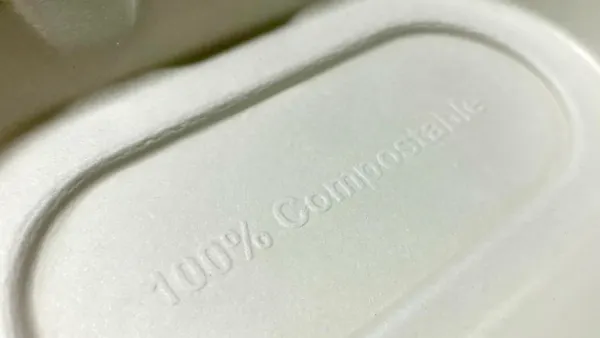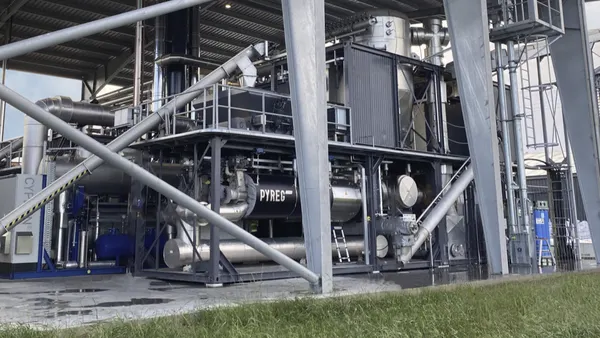Dive Brief:
- The New York Department of Environmental Conservation released a report that found 1.6 million pounds of food had been diverted to Feeding New York State between Jan. 1 and Oct. 22, 2022 through an organics recycling mandate for large generators passed in 2019.
- The agency identified 1,150 businesses that fell under a mandate to donate edible food to the maximum extent practicable in 2022, but only 320 had to arrange for recycling due to their proximity to recyclers.
- DEC also identified that the number of food scraps recyclers available for New York businesses in and near the state has nearly doubled over the course of a year, from 27 facilities in November 2021 to 48 facilities a year later, adding 260 tons of capacity per week.
Dive Insight:
The contours of the organics mandate were shaped by years of debate between the state legislature and then-Gov. Andrew Cuomo before the Food Donation and Food Scraps Recycling Law was passed.
Following a rule-making period, the mandate went into effect on Jan. 1, 2022, requiring businesses outside of New York City that generate more than two tons of food scraps per week to implement an organics recycling program, with some waivers allowed.
Since the mandate was passed, the DEC has provided millions of dollars in technical assistance to businesses and municipalities to ramp up their organics recovery operations and funding for research to recycle food waste more effectively.
DEC increased the number of businesses that fall under the legal definition of designated food scraps generators to 1,198 for 2023. The state agency issued 28 waivers in 2022, all but three of which went to the “grocery & specialty food” and “restaurant” categories. Waiver requests are still under review for 2023.
DEC reported that the vast majority of the waivers were issued because the businesses' total cost of recycling went up by more than 10% if they included organics recycling.
Overall organics diversion data won’t be available until new reports come in.
The report acknowledged some limitations to the current mandates. DEC notes that only sources of food scraps within a 25-mile radius of organics recycling facilities are required to comply, but most waste is transported about 60 miles on average to the nearest disposal site. The report estimates that 72% of facilities that would otherwise be required to recycle food scraps under the law are exempt because of the 25-mile radius rule.
New York's climate plan also recommends removing the two tons per week minimum requirement to capture more food waste.
Even so, the agency noted a “substantial” need for additional and larger infrastructure of all kinds to handle the amount of food scraps and waste captured by the mandate, including anaerobic digesters, five of which are currently accepting organics from New York.
New York is one of nine states (plus Washington, D.C.) that have organic waste bans and waste recycling laws on the books, according to a policy tracker from ReFED, a nonprofit that advocates for the reduction of food waste. That list continues to grow, as states like Maryland see similar policies to New York’s go into effect this year.










